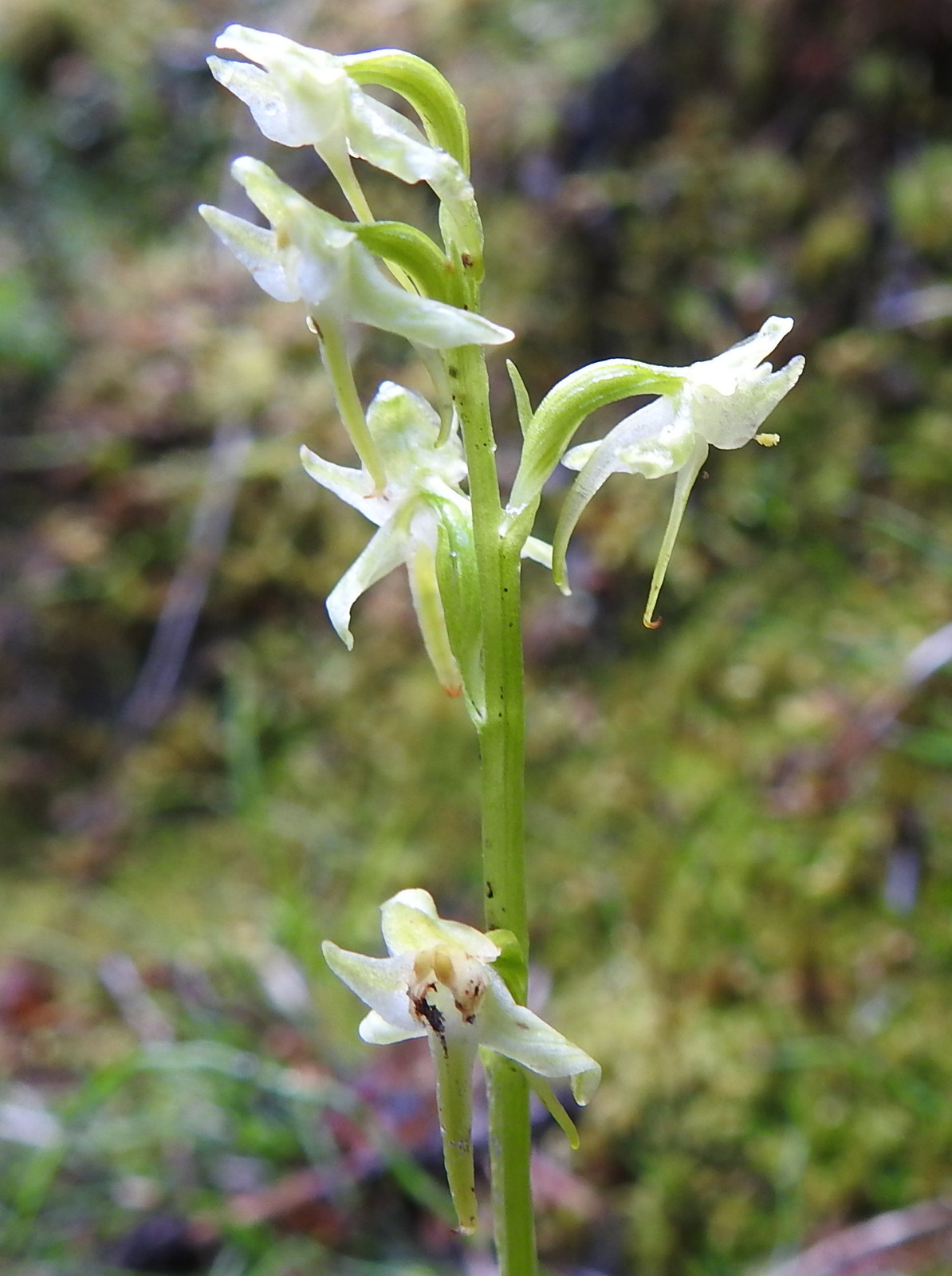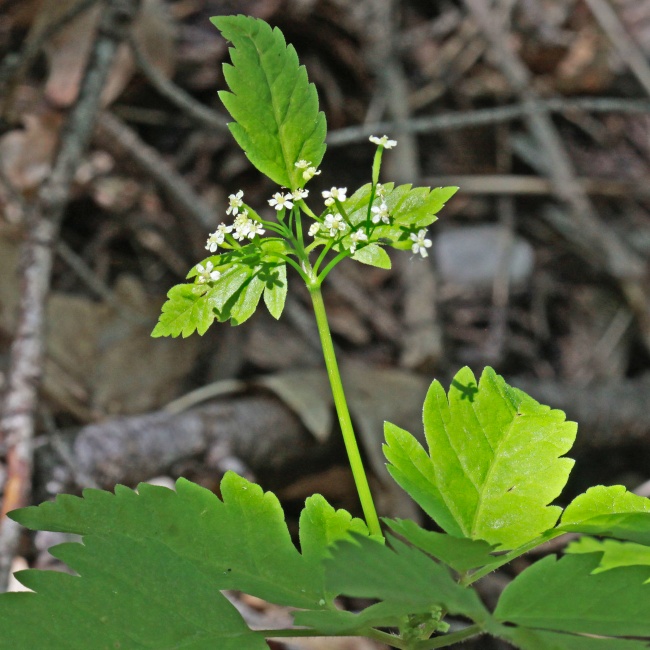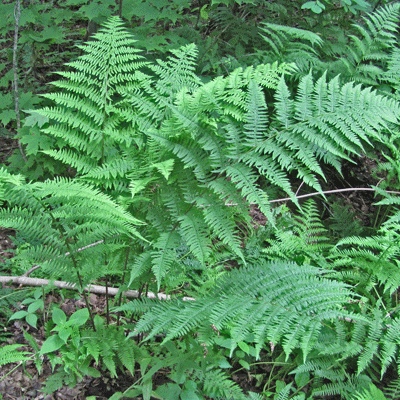Status of Old-Forest Vascular Plants
In this section we explore how human disturbance effects native vascular plants associated with old mixedwood and deciduous forests.
The overall intactness of old-forest vascular plant species as measured by the Biodiversity Intactness Index was found to be, on average
96.9%
Northern Operating Area
90.8%
Southern Operating Area
- This means most of the habitat for most vascular plants is in good condition, but habitat suitability is lower in some areas due to human development activities.
- Habitat suitability is higher in the Northern Operating Area because there is less human footprint on this landbase than in the Southern Operating Area.
Introduction
Understory plant communities represent an important part of biodiversity in boreal and montane forest ecosystems, influencing the trees that grow in the overstory, the fertility of the soil via nutrient cycling, and the availability of food and habitat for a variety of wildlife[1].
- Stand-replacing fire is the principal natural disturbance of boreal and foothills forests, with vascular plants adapted to these frequent disturbance events; few species are restricted to one particular forest type but instead can be found in a broad range of habitats[2].
- Despite these broad tolerances, deciduous and mixedwood forests, which are characterized by higher light levels, warmer soils, and higher nitrogen availability, support a greater diversity of vascular plants than do coniferous forests[3].
- There are some vascular plant species that are more strongly associated with older mixedwood and deciduous forests than to other stand types and forest ages.
Intactness and sector effects are summarized for native vascular plant species associated with old deciduous and mixedwood forests in Norbord’s operating areas. Because many vascular plant species associated with old deciduous and mixedwood forests can also be found in other habitats, only species that respond negatively to human footprint are highlighted. Details for calculating intactness and sector effects can be found in the Methods.
 Photo: Gertjan van Noord
Photo: Gertjan van Noord
Blunt-leaved Bog Orchid (Platanthera obtusata)
Results
Biodiversity Intactness
The overall intactness of old-forest vascular plant species as measured by the Biodiversity Intactness Index was found to be, on average:
Northern Operating Area
96.9%
31 species
Southern Operating Area
90.8%
36 species
Partner Operating Area
93.9%
36 species
2018 Highlights
- Habitat suitability for old-forest vascular plant species, as indicated by intactness, is higher in the Northern Operating Area than in the Southern and Partner Operating Areas; this can be attributed to the lesser total human footprint in the north.
- In the Northern Operating Area, all species associated with old deciduous and mixedwood forests have intactness > 90%, meaning these species are close to reference conditions without human footprint.
- Of the 36 species that were assessed in the Southern Operating Area, 26 species had intactness values that were more than 90%, indicating relative abundance is close to reference conditions. Seven species had intactness values between 80% and 90%, and seven species had intactness values less than 80%.
- The seven species that showed the largest deviation from intact reference conditions in the Southern Operating Area were: Blunt-leaved Bog Orchid (Platanthera obtusata; 78.1%), Ground Cedar (Diphasiastrum complanatum; 76.3%), White Grained Mountain Rice Grass (Oryzopsis asperifolia; 75.5%), Spreading Sweet Cicely (Osmorhiza depauperata; 74.3%), Clasping Leaved Twisted Stalk (Streptopus amplexifolius; 74.3%), Lady Fern (Athyrium filix-femina; 73.7%), and Wild White Geranium (Geranium richardsonii; 64.0%). These species are all strongly associated with mature/old mixedwood forests, are less abundant in other stand types, and respond negatively to human footprint.
- Old-forest vascular plants are disproportionately affected by human footprint because, as of 2018, 46% and 49% of human footprint had occurred in deciduous and mixedwood forest in the Northern and Southern Operating Areas, respectively.

Spreading Sweet Cicely (Osmorhiza depauperate)

Lady Fern
(Athyrium filix-femina)
Results
Sector Effects
Local Scale Sector Effects
Local scale sector effects are used to understand what industrial sectors are most affecting the abundance of vascular plant species associated with old deciduous/mixedwood forests in Norbord’s operating areas. Changes in species' relative abundance are predicted within each sector’s footprint compared to the reference conditions with no human footprint.
- With few exceptions, all categories of human footprint decrease habitat suitability for vascular plant species associated with old deciduous/mixedwood forests in Norbord’s operating areas because these activities result in changes to their habitat, which decreases habitat suitability.
- Within forestry footprint, the populations of most old-forest vascular plant species are predicted to be less abundant than expected compared to the habitat it replaces, with nine species predicted to be at least 50% less abundant than expected. However, 12 species (e.g., Saskatoon, Low Bush Cranberry, and Fairybells) are more abundant than expected in forestry footprint.
Regional Population Effects
Regional population effects reflect the total expected change for the population of each old-forest vascular plant species across Norbord’s operating areas due to each sector’s footprint. This incorporates the area of the footprint, the native habitats in the region where the footprint occurs, and the species' response to a particular footprint. The calculation also incorporates the entire landbase of each operating area, large tracts of which have no human footprint.
- Regional effects are much less than local scale sector effects because a great deal of old forest habitat has not been disturbed by human footprint in Norbord’s operating areas; regional effects are larger in the south because of the higher footprint there.
- For energy, transportation, and urban/industrial footprint, regional population effects of industrial sectors on vascular plants associated with old deciduous forest was small—between -3.0% and +2.0%.
- Forestry footprint resulted in the largest predicted loss of suitable habitat for many old forest vascular plants—on average -2.0%, -7.0%, -4.5% for the Northern, Southern, and Partner Operating Areas, respectively—because harvesting disturbs the most native vegetation and this is the largest footprint type in all three operating areas. Regional populations of 11 species were predicted to be at least 10% less abundant than expected.
To view species-specific sector effects, use the drop-down menu to select a species of interest.
Northern Operating Area - Local Scale Sector Effects
Figure: Local Scale Sector Effects. Predicted per cent change in species' relative abundance inside areas that have been disturbed by each sector (human footprint type) compared to reference conditions with no human footprint. Local scale sector effects values less than 0% indicate fewer vascular plants in that type of footprint than in the reference habitat; greater than 0% indicate more vascular plants.
Northern Operating Area - Regional Scale Sector Effects
Figure: Regional Sector Effects. Predicted per cent change in the total regional population of vascular plants, by species, due to the footprints of each industrial sector. Regional sector effect values less than 0% indicate a predicted decrease in the regional population due to a sector's footprint and values greater than 0% indicate a predicted increase. Note that sector effects consider only the direct impact of disturbed areas and do not consider edge effects or other non-footprint effects (e.g., noise, pollution).
Southern Operating Area - Local Scale Sector Effects
Figure: Local Scale Sector Effects. Predicted per cent change in species' relative abundance inside areas that have been disturbed by each sector (human footprint type) compared to reference conditions with no human footprint. Local scale sector effects values less than 0% indicate fewer vascular plants in that type of footprint than in the reference habitat; greater than 0% indicate more vascular plants.
Southern Operating Area - Regional Scale Sector Effects
Figure: Regional Sector Effects. Predicted per cent change in the total regional population of vascular plants, by species, due to the footprints of each industrial sector. Regional sector effect values less than 0% indicate a predicted decrease in the regional population due to a sector's footprint and values greater than 0% indicate a predicted increase. Note that sector effects consider only the direct impact of disturbed areas and do not consider edge effects or other non-footprint effects (e.g., noise, pollution).
References
Hart, S.A. and H.Y.H. Chen. 2008. Fire, logging, and overstory affect understory abundance, diversity and composition in boreal forest. Ecological Monographs 78(1):123-140.
Hart, S.A. and H.Y.H. Chen. 2006. Understory vegetation dynamics of North American boreal forests. Critical Reviews in Plant Sciences 25(4):381-397.
Macdonald, S.E. and T.E. Fenniak. 2007. Understory plant communities of boreal mixedwood forests in western Canada: Natural patterns and response to variable-retention harvesting. Forest Ecological and Management 242(1):34-48.




